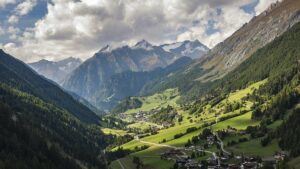Introduction
Rome, the capital city of Italy, is one of the most famous and historically significant cities in the world. It is located in the central-western part of the Italian Peninsula, specifically in the region of Lazio. Rome’s geographical coordinates are approximately 41.9028° N latitude and 12.4964° E longitude. On the world map, Rome can be found in southern Europe, bordered by the Tyrrhenian Sea to the west.
Geographical Location
Rome is situated on the western coast of Italy, near the mouth of the Tiber River. Its strategic location made it a vital city in ancient times, as it provided access to both the Mediterranean Sea and the Italian mainland. The city is surrounded by hills, including the famous Seven Hills of Rome, which are Aventine, Caelian, Capitoline, Esquiline, Palatine, Quirinal, and Viminal.
Importance and Influence
Rome’s position on the world map has played a significant role in its historical importance and influence. As the capital of the Roman Empire, Rome became the center of political, cultural, and economic power in the ancient world. The empire expanded its territories across Europe, North Africa, and the Middle East, making Rome a crucial hub for trade and governance.
Landmarks and Attractions
Rome is renowned for its architectural wonders and historical landmarks. The city is home to iconic structures such as the Colosseum, Roman Forum, Pantheon, and Trevi Fountain. These attractions draw millions of tourists from around the world, further solidifying Rome’s position as a global city.
Transportation and Connectivity
Rome is well-connected to the rest of Italy and the world through various transportation networks. The city has two international airports, Leonardo da Vinci-Fiumicino Airport and Ciampino Airport, which serve as major hubs for air travel. Additionally, Rome is connected to other Italian cities and neighboring countries through an extensive railway network, making it easily accessible for both domestic and international visitors.
Conclusion
Rome’s location on the world map in southern Europe has played a crucial role in its historical significance and influence. As the capital of the Roman Empire, the city became a center of power and culture, leaving behind a rich heritage of architectural wonders and historical landmarks. Today, Rome continues to attract visitors from all over the world, showcasing its enduring appeal and global importance.
References
– Encyclopedia Britannica: britannica.com
– Lonely Planet: lonelyplanet.com
– Rome Tourism Official Website: turismoroma.it






